1.1.2 处理信息
学习目标
这一节,我们从 cut、tr、uniq 、小结 四个方面来学习。
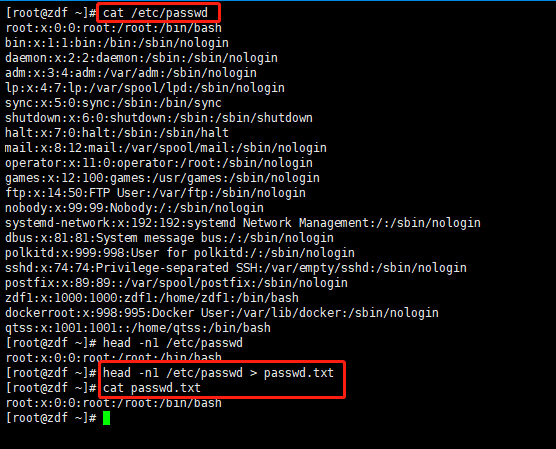
cut命令
数据截取
Mandatory arguments to long options are mandatory for short options too.
-b, --bytes=列表 只选中指定的这些字节
-c, --characters=列表 只选中指定的这些字符
-d, --delimiter=分界符 使用指定分界符代替制表符作为区域分界
-f, --fields=LIST select only these fields; also print any line
that contains no delimiter character, unless
the -s option is specified
-n with -b: don't split multibyte characters
--complement 补全选中的字节、字符或域
-s, --only-delimited 不打印没有包含分界符的行
--output-delimiter=字符串 使用指定的字符串作为输出分界符,默认采用输入
的分界符
--help 显示此帮助信息并退出
--version 显示版本信息并退出
# cut -d: -f1 1.txt 以:冒号分割,截取第1列内容
# cut -d: -f1,6,7 1.txt 以:冒号分割,截取第1,6,7列内容
# cut -c4 1.txt 截取文件中每行第4个字符
# cut -c1-4 1.txt 截取文件中每行的1-4个字符
# cut -c5- 1.txt 从第5个字符开始截取后面所有字符
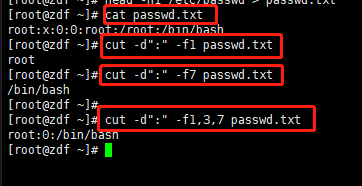

tr命令
字符转换、替换、删除
用法:tr [选项]... SET1 [SET2]
从标准输入中替换、缩减和/或删除字符,并将结果写到标准输出。
-c, -C, --complement 首先补足SET1
-d, --delete 删除匹配SET1 的内容,并不作替换
-s, --squeeze-repeats 如果匹配于SET1 的字符在输入序列中存在连续的
重复,在替换时会被统一缩为一个字符的长度
-t, --truncate-set1 先将SET1 的长度截为和SET2 相等
--help 显示此帮助信息并退出
--version 显示版本信息并退出
用法1:把commands命令输出做为tr输入进行处理
commands | tr 'string1' 'string2'
用法2:把文件中的内容输入给tr进行处理
tr 'string1' 'string2' < filename
用法3:把文件中的内容输入给tr进行处理,需要使用到选项
tr options 'string1' < filename
示例1:通过tr把反复出现的内容进行压缩,压缩后再处理。
[root@localhost ~]# ifconfig eth0 | grep -w inet
inet 10.0.0.12 netmask 255.255.255.0 broadcast 10.0.0.255
[root@localhost ~]# ifconfig eth0 | grep -w inet | tr -s " "
inet 10.0.0.12 netmask 255.255.255.0 broadcast 10.0.0.255
[root@localhost ~]# ifconfig eth0 | grep -w inet | tr -s " " | cut -d " " -f 3 10.0.0.12
示例2: 文件的演示
[root@localhost ~]# head -n 5 /etc/passwd > test1.txt
[root@localhost ~]# tr '[0-9]' '@' < test1.txt
root:x:@:@:root:/root:/bin/bash
bin:x:@:@:bin:/bin:/sbin/nologin
daemon:x:@:@:daemon:/sbin:/sbin/nologin
adm:x:@:@:adm:/var/adm:/sbin/nologin
lp:x:@:@:lp:/var/spool/lpd:/sbin/nologin
[root@localhost ~]# tr '[a-z]' '[A-Z]' < test1.txt
ROOT:X:0:0:ROOT:/ROOT:/BIN/BASH
BIN:X:1:1:BIN:/BIN:/SBIN/NOLOGIN
DAEMON:X:2:2:DAEMON:/SBIN:/SBIN/NOLOGIN
ADM:X:3:4:ADM:/VAR/ADM:/SBIN/NOLOGIN
LP:X:4:7:LP:/VAR/SPOOL/LPD:/SBIN/NOLOGIN
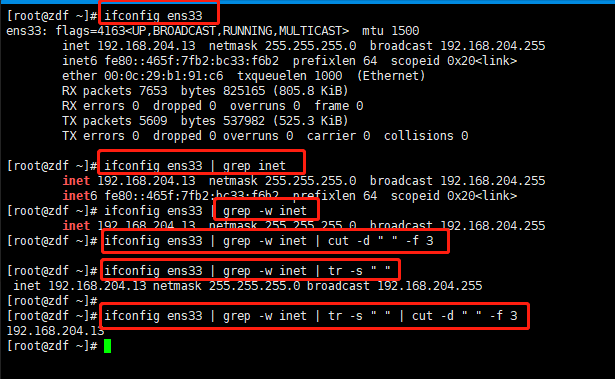

uniq命令
连续信息去重
Mandatory arguments to long options are mandatory for short options too.
-c, --count 统计重复行次数
-d, --repeated 只显示重复行
-i, --ignore-case 忽略大小写
-s, --skip-chars=N avoid comparing the first N characters
-u, --unique only print unique lines
文件内容
[root@localhost ~]# cat uniq.txt
AA
aa
aa
bb
cc
cc
dd
去重演示
[root@localhost ~]# uniq uniq.txt
AA
aa
bb
cc
dd
其他演示
uniq -i uniq.txt 大小写不敏感去重
uniq -ic uniq.txt 大小写不敏感去重后计数
uniq -d uniq.txt 仅显示重复的内容
sort -n num.txt | uniq 结合sort排序后去重
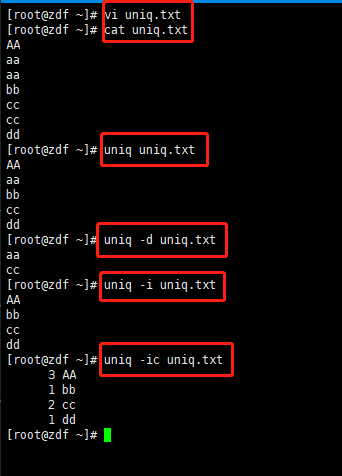
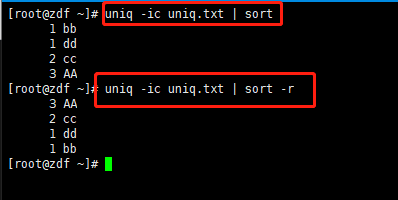
扫描二维码关注公众号,回复:
14562822 查看本文章


小结